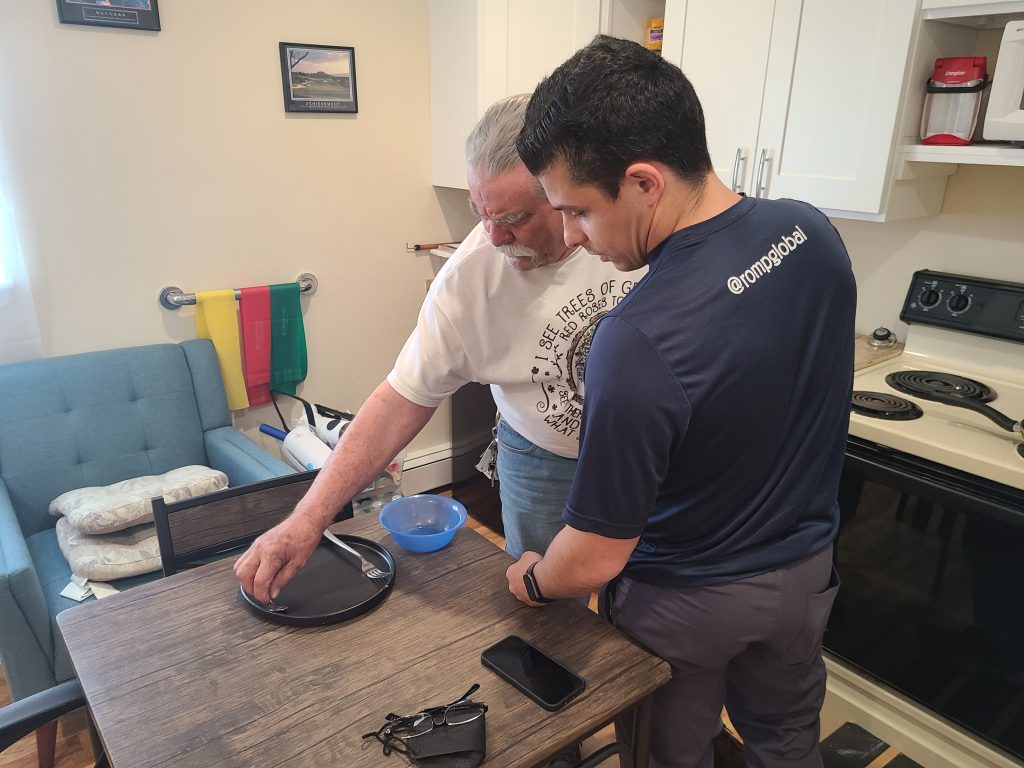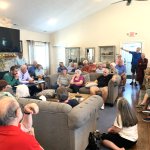Seaside Rehabilitation has been operating in the Cape May Courthouse area since 2019. Monica LaSalle started as a Speech-Language Pathologist almost 3 decades ago.
Her passion for her calling has turned into a lifelong path that has taken her from the City of Brotherly Love to Cape May County with a few stops in between. Throughout her journey, she has consistently focused on her clients and her mission, which is improving independence in communication and activities of daily living for the people that she works with
Seaside Rehabilitation now has a new location and a 5-team workforce of certified Speech-Language Pathologists and Occupational Therapists. These services are offered to clients who are experiencing difficulties due to developmental delays, physical injury, neurological insult or disorders, and a general decline due to the aging process. Along with Speech-Language Pathology and Occupational Therapy, they are also certified to diagnose Autism using the Autism Diagnostic Schedule (ADOS-2) testing which will help families get the much-needed support earlier while waiting to see Developmental Pediatricians.
Speech-Language Pathology
– Speech-language pathologists (SLPs) work to assess, diagnose, and treat speech, language, social communication, cognitive-communication, and swallowing disorders in children and adults.
– Speech disorders occur when a person has difficulty producing speech sounds correctly or fluently or has problems with his or her voice or resonance.
– Language disorders occur when a person has trouble understanding others (receptive language), or sharing thoughts, ideas, and feelings (expressive language). Language disorders may be spoken or written and may involve the form (phonology, morphology, syntax), content (semantics), and/or use (pragmatics) of language in functional and socially appropriate ways.
– Social communication disorders occur when a person has trouble with the social use of verbal and nonverbal communication. These disorders may include problems (a) communicating for social purposes (e.g., greeting, commenting, asking questions), (b) talking in different ways to suit the listener and setting, and (c) following rules for conversation and storytelling. Many individuals with autism spectrum disorder have social communication problems. Social communication disorders are also found in individuals with other conditions, such as traumatic brain injury.
– Cognitive-communication disorders include problems organizing thoughts, paying attention, remembering, planning, and/or problem-solving. These disorders usually happen as a result of a stroke, traumatic brain injury, or dementia, although they can be congenital.
– Swallowing disorders (dysphagia) are feeding and swallowing difficulties, which may follow an illness, surgery, stroke, or injury.
Occupational Therapy
An Occupational Therapist treats people throughout the lifespan with injuries, disabilities, or developmental delays using several therapeutic daily activities. They evaluate, plan, organize, and conduct rehabilitative programs that seek to develop or restore important life skills, and improve general independence.
Pediatric Patient Occupational Therapy
– Feeding: The therapist works with children from the basics of toleration of a variety of food textures due to sensory integration difficulties through the actual process of properly utilizing utensils age appropriately to support proper nutrition.
– Self-Care: Activities of Daily Living– The therapist works with children in the areas of hygiene, toileting, dressing, crawling, walking, skipping, throwing, and catching a ball.
– Sensory Integration: is a neurological disorder that results from the brain’s inability to integrate, process, and respond to certain information received from the body’s five basic sensory systems. Occupational Therapist are specially trained to use techniques that desensitize or heighten the neurological system to meet the child’s need which helps to organize them and improve focus so that they can learn and participate in functional tasks.
– Fine Motor: The therapist works with children to help improve hand eye coordination, grasp, manipulation of their hands and fingers to complete tasks such as snipping with scissors, holding a crayon or pencil, buttoning or zipping clothing.
– Upper Extremity Strength, Balance and Coordination: The Occupational Therapist works with children in functional and play tasks to improve these areas so that they can maintain proper alignment and coordination to successful care for themselves and complete age-appropriate tasks.
Geriatric Occupational Therapy (Patients with disabilities due to physical or neurological insult, as well as, general functional decline due to the natural aging process)
-Gaining the physical skills needed to use an arm/hand that was affected by a stroke or brain injury.
-Teaching adaptive ways to get washed, dressed and perform homemaking activities.
-Teaching energy conservation techniques so that an individual can continue to perform daily activities.
-Developing strategies to compensate for cognitive impairments, to allow individuals to increase their independence in everyday tasks.
-Teaching joint protection and the use of adaptive devices that will allow individuals with painful joints to continue to engage in their occupations.
Autism Diagnostic Services (ADOS-2)
With the incidence of Autism increasing, wait lists to see a developmental pediatrician for medical diagnosis of Autism can be up to 1 year. For this reason, the authors of the most popularly used diagnostic tool have recognized the need for early diagnosis and have expanded its training and certification to other health care professionals, including Speech Language Pathologists. Monica LaSalle, MA,CCC/SLP is certified to administer the Autism Diagnostic Schedule, Second Edition, (ADOS-2). This is the assessment used by Developmental Pediatricians in Diagnosing Autism. The ADOS-2 accurately assesses and diagnoses autism spectrum disorders across age, developmental level, and language skills.
ADOS-2 is a semi-structured, standardized assessment of:
– Communication
– Social interaction
– Play
– Restricted and Repetitive
– Behaviors
The assessment presents various activities that elicit behaviors directly related to a diagnosis of ASD. By observing and coding these behaviors, you can obtain information that supports diagnosis, treatment planning, and educational placement.
If you need any of these therapies, reach out to Seaside Rehabilitation, located in Cape May Court House at 316 S Main St. 08210. Also check out their new website at seasiderehabnj.com.
Seaside Rehabilitation will be hosting an Open House on May 14, from 10 am to 1 pm. This will give the community the opportunity to see our new facility, meet some of our staff, and ask a licensed therapist questions. Free screenings in Speech, Language, Motor development, ADL, and Sensory Integration will be available that day and can be scheduled by simply registering at seasiderehab@gmail.com
This summer, Seaside Rehabilitation will also be holding a series of social skills groups. Please follow us on Facebook and Instagram or check our websites for dates and pricing.








